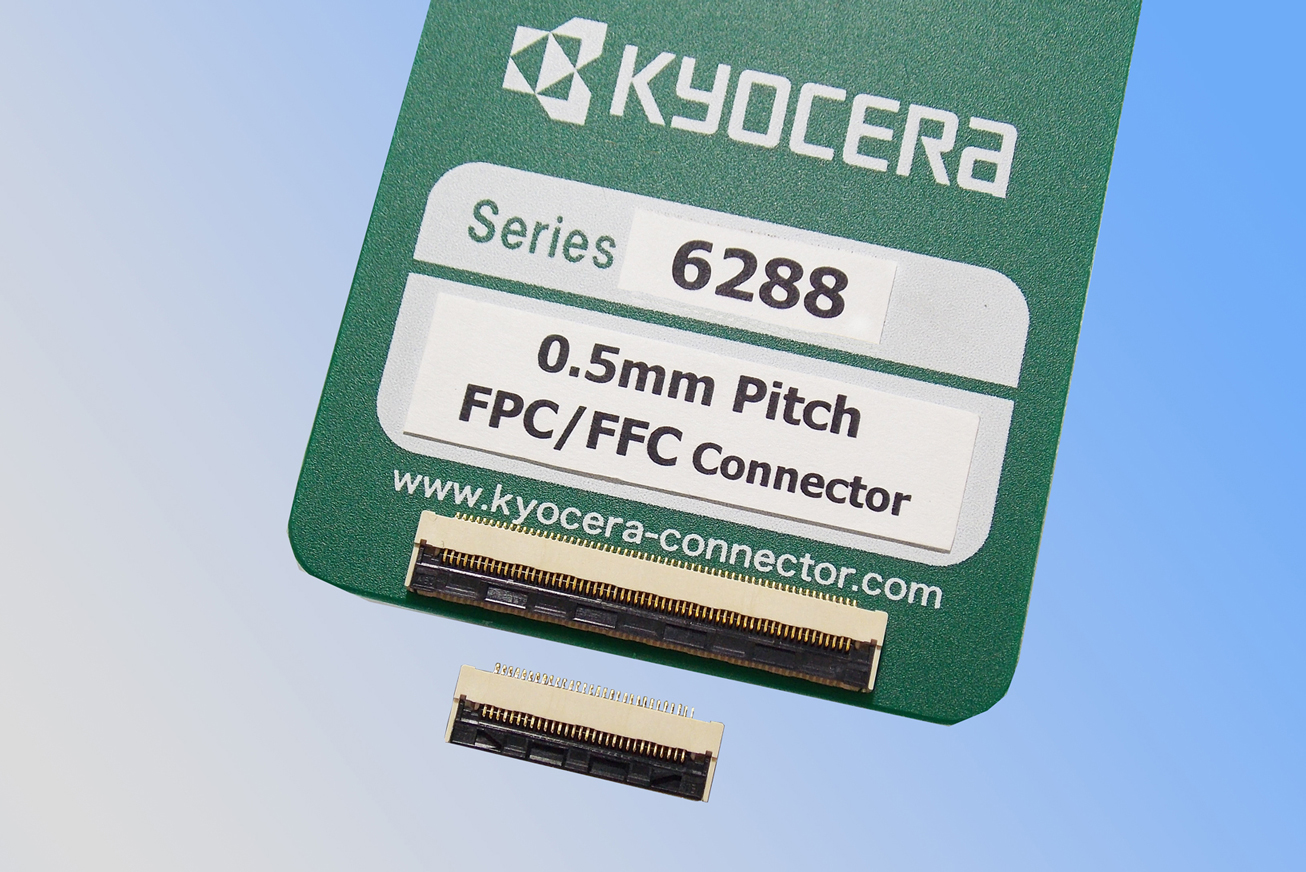KYOCERA Connector Products Corporation Adds High Heat-Resistant Type to 6288 Series Withstanding Up to +125℃
High-reliability FPC/FFC Connectors support in-vehicle equipment including technologies for connected cars
26 October 2016
Kyoto/Neuss – Kyocera Connector Products Corporation (President: Yoji Date) announced that it has added a "High Heat-Resistant Type" to its 6288 Series FPC/FFC Connectors, featuring a pitch of 0.5mm and designed for in-vehicle equipment. The new design extends the upper limit of the operating temperature range from +105℃ to +125℃. Sales will begin on November 1.
The in-vehicle equipment market, such as car navigation systems, millimeter wave radars and heads-up displays, for which demand has been growing in recent years, has placed emphasis on safety and security, creating a strong need for high reliability in electronic components that ensure operation even under severe environments, including temperature changes and vibrations. High reliability is required because connectors directly support the performance of the equipment that they are connected to. For example, there is an increasing demand for heat-resistant connectors used for control devices such as ECUs located near engine rooms, to withstand use in extremely high temperatures.
The 6288 Series has been adopted in numerous in-vehicle applications requiring high reliability since its release in 2008. For high temperature applications, Kyocera Connector Products Corporation releases its newly developed “High Heat-Resistant Type”, as an additional model of the 6288 Series. The upper limit of the operating temperature range has been expanded to +125℃. This highly reliable connector features enhanced retention strength to hold FPC/FFC’s and prevents misalignments of contacts from oblique insertions by using tabbed cables, thus enabling secure connection.
Kyocera Connector Products Corporation will continually contribute to the developments of the automotive industry by designing new products that meet the rapidly evolving needs of quality and reliability.
Product name:
FPC/FFC Connector 6288 Series “High Heat-Resistant Type"
Availability:
From November 1, 2016
Main Features
1. Maximum Operating Temperature Increased to +125℃
With a temperature threshold up to +125℃, the new 6288 series is suitable for connections of control devices located near heated engine rooms or other heated spaces.
2. Robust Structure Achieves High Contact Reliability
The newly enhanced 6288 series is utilized with versatile FPC/FFC’s with thicknesses of 0.3±0.05mm. High reliability is achieved by adding retention forces that hold FPC/FFC’s in place while preventing misalignments of contacts from oblique insertions by incorporating the use of tabbed cables, enabling a secure connection. Applicable FPC/FFC’s can also be used with the vertical-type 6801 Series and 6251 Series, as well as the conventional 6288 Series.
3. Manufactured in Production Facilities with ISO/TS16949 Certifications
This series is manufactured in production facilities with ISO/TS16949 certifications, which is the international standard for quality management systems in the automotive industry.
4. Simple Locking Mechanism Improves Workability
A temporary holding structure for the FPC / FFC enables a simple, one-finger operation, thus increasing work efficiency. When closed, an audible “click” feeling from the front locking mechanism confirms that the connector is secured.
5. Packaged in Tape and Reel (2,000 pieces/reel)
6. RoHS Compliant
7. Specifications
| No. of positions | 8 to 80 pos. |
| Pitch | 0.5mm |
| Height | 2.0mm |
| Width | 6.5mm |
| Locking Type | Front lock |
| Contact position | Bottom |
| FPC/FFC Thickness | 0.3±0.05mm |
| Rated current | DC 0.5A/contact |
| Rated voltage | DC 50V/contact |
| Materials | Copper alloy / heat resistant plastic |
| Operating temperature range | -40 to +125℃ |
| D.W. Voltage | AC 200Vrms/min. |
Kyocera will be presenting its new Connector at this year’s electronica in Munich, Germany (Hall A3, Booth 241). The global trade fair for electronic components, systems and applications takes place from 8–11 November.
For more information about Kyocera: www.kyocera.eu
Editorial Material
- Press information (pdf) (187.71 KB)
- Press Picture (jpg) (682.84 KB)


